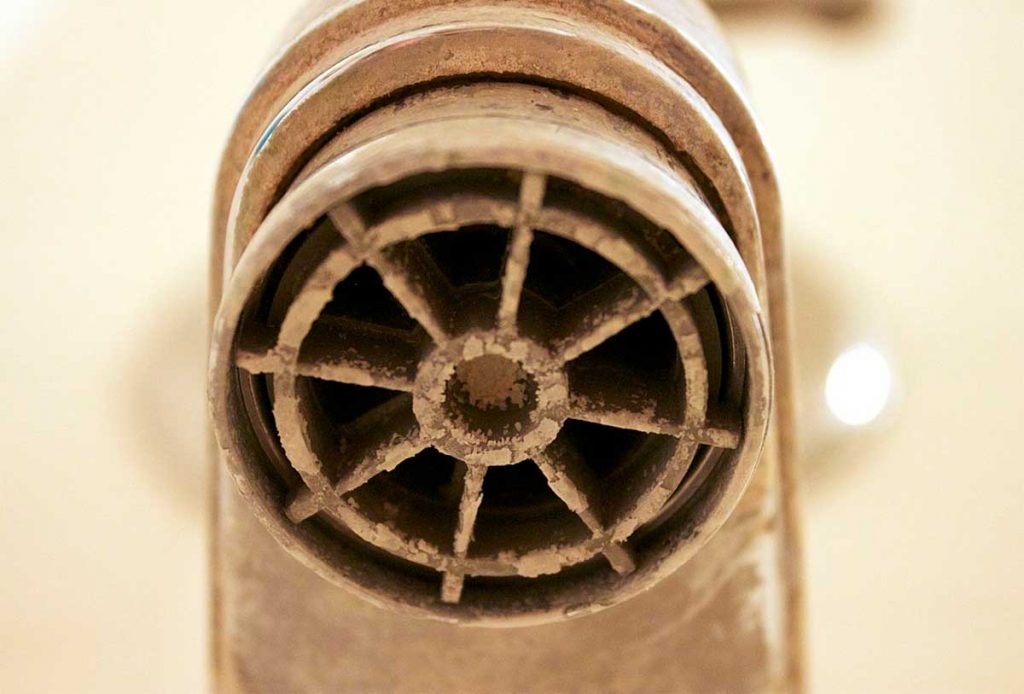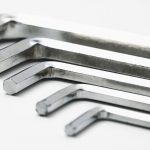Besides the lack of aesthetics, calcium buildups can be hard on appliances and plumbing. Though removing these gunks isn’t that much of a hassle, wouldn’t you prefer preventing it from happening instead of having to clean it up?
So, how to prevent calcium buildup on faucets? Today’s article will have some rundowns on the factors contributing to calcium buildups and the best way to keep your pipes squeaky clean.
What Causes Calcium Buildup On Faucets?
Calcium buildups (limescale) form due to water containing dissolved calcium salts moving through the pipes and flowing through your faucets and showerheads.
If the water source contains a great number of such minerals, it means you have a ‘hard’ water source. As a result, you might happen to see calcium buildups more often than usual. Over time, if left unhandled, these gunks can clog up your water system and cause various plumbing issues.
What Does Calcium Accumulation Look Like?

Calcium buildups can be detected as white chalky deposits on faucet spouts, handles, showerheads. Sometimes you will also see bluish-green accumulation if you own copper pipes, but most of the time, they are ivory-white and feel crusty.
How To Remove The Calcium Buildups: A Detailed Guide
You can apply several methods to remove calcium buildups, most of them are home remedies, and the items are easily found anywhere. You are going to need:
- Vinegar or CLR
- Rubber bands
- An old piece of cloths
- Sponge
Step 1: Test to make sure the CLR you’re using is compatible with your faucet materials; spot testing is recommended. If you’re using vinegar, mix it with water in a 1:1 ratio.
Step 2: Soak cloths or paper towels in the prepared solution, cover them around the faucets or showerheads, and use rubber bands to secure them. You can also fill sandwich-sized bags with this solution and tight them with rubber bands for areas that need more exposure to the chemicals.
Step 3: Let them sit for an hour before you address the residues with a wet sponge. By doing this, you’re allowing the buildup in aerators to break out, thus making cleaning a lot easier.
Step 4: Wipe off the area again with a dry cloth and let it dry thoroughly.
And that’s how you address calcium build-ups from your faucets and pipes. Should you have baking soda at hand, mix one part of vinegar with two parts of baking soda. This paste can be rubbed on the affected areas and left for 5-10 minutes before wiping clean.
Store-bought cleaners also work great if you don’t mind some chemicals. Otherwise, white vinegar is enough to get the work done.
If you’re using CLR, you should check what type of chemicals are in these. Also, make sure to carry out the cleaning in a well-ventilated place.
How To Prevent Buildup On Faucets
After you know the way calcium accumulation forms and how to remove them, you need to learn more about preventing them in this part.
As mentioned, the softer the water, the less likely it is that you encounter buildups on your valve. So, the best way to keep your faucets buildup-free is to install a water softener.
Not only will it dissolve calcium salts on the faucet, but it can also aid in providing extra protection to your appliances and plumbing.
There is a wide range of water softener choices compatible with different plumbing systems; if you can not be sure about which to choose, consider talking to a plumber to determine the most suitable for your apartment.
FAQs
Does Apple Cider Vinegar Work To Dissolve Calcium Deposits?
This apple vinegar can get the job done for you, though the effects won’t be as good as regular white vinegar or CLR.
Yet, apple cider vinegar can stain your faucets, so we don’t recommend using it as an alternative to white vinegar unless you don’t mind a little staining and lack of performance.
Do Water Filters Get Rid Of Calcium?
Water filters like ion exchange or reverse osmosis can remove up to 98% of the impurities in hard water, so technically, they can get rid of the calcium, but not all of it.
Moreover, a water test is needed to find the right solution to your problems. Water filtration is recommended if you find other contaminants available in the water, such as iron, chlorination, fluoride, etc. These systems are usually more expensive yet require less maintenance.
Related: 10 faucets for hard water
What Are Water Softeners And Their Use?
A water softener works as a filtration system designed to remove concentrations of minerals like magnesium and calcium from hard water. When water flows through this system, it eliminates such minerals to give you a clean, softened water source without the risk that hard water poses.
When Do I Call A Professional?
Professional help comes in handy when you don’t always have time to carry out cleaning. Though the task is fairly easy, it can be time-consuming. In other cases, the build-up takes place too quickly and in multiple areas.
When needed, the plumber will perform a water test to determine your problems, then suggest a solution that suits your budget and, of course, gets rid of such problems.
So, the only thing you need to do is recognize the signs of calcium buildups and find a reliable agency to do the rest.
Final Thoughts
Welp, there you have it – a thorough guide on how to clean calcium buildup on faucets. Hopefully, you found this article helpful and will help you somehow.
After all, you might consider installing a water softener to get rid of calcium accumulation can be expensive, but it helps save money in the long run.
Think about the times you can just sit back and enjoy your favorite show while your water softener does all the work. Doesn’t that sound good to you?



